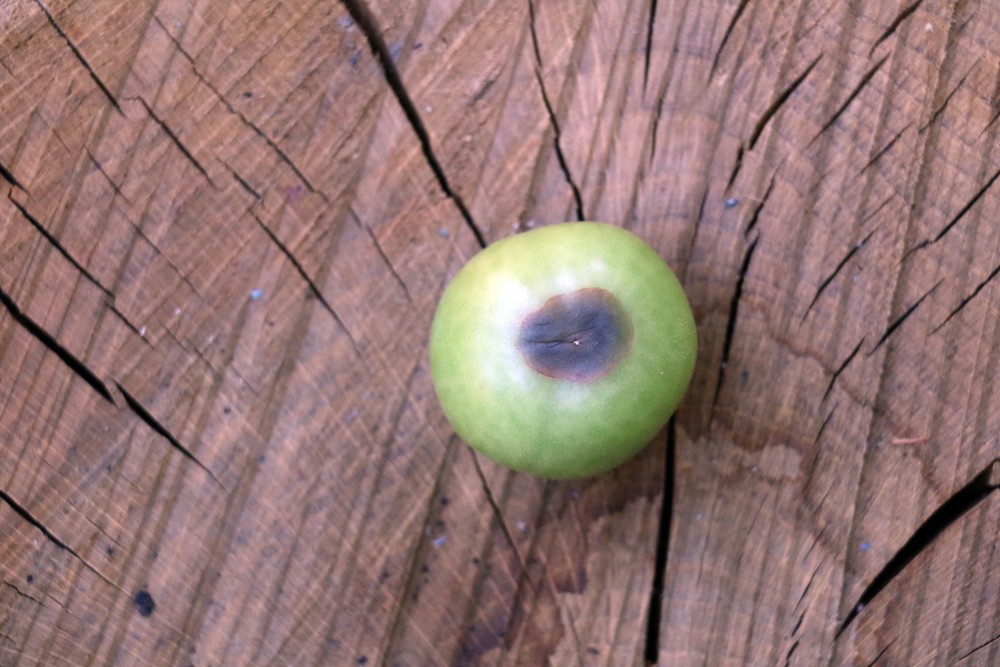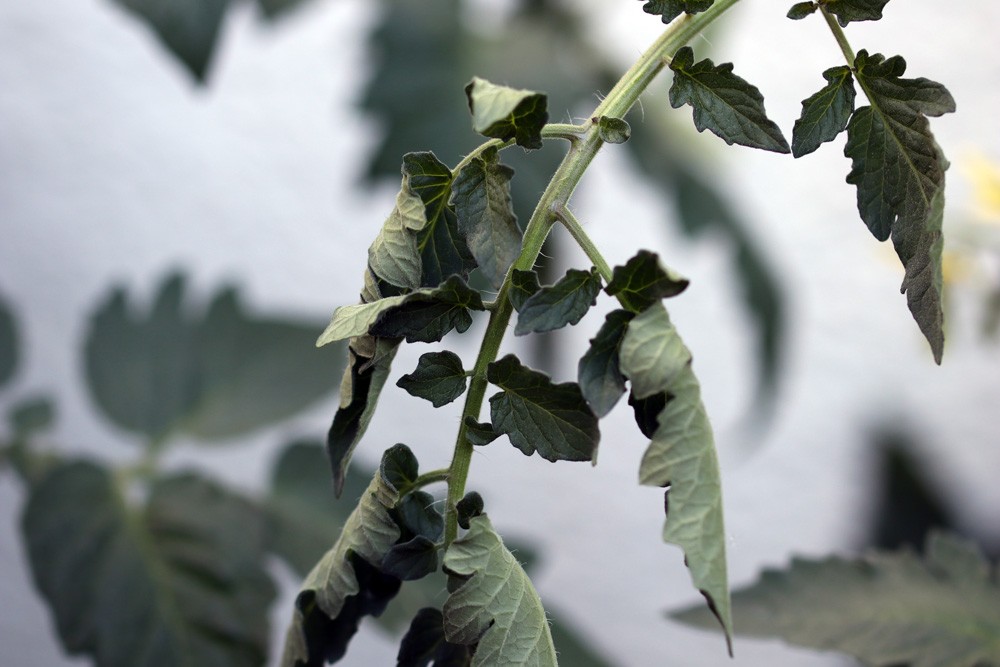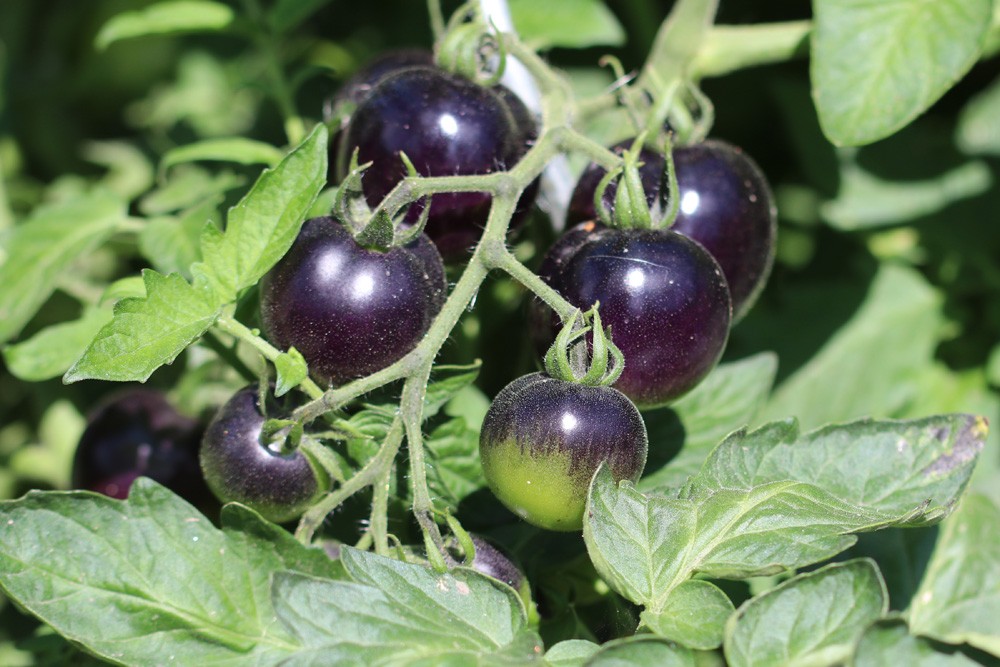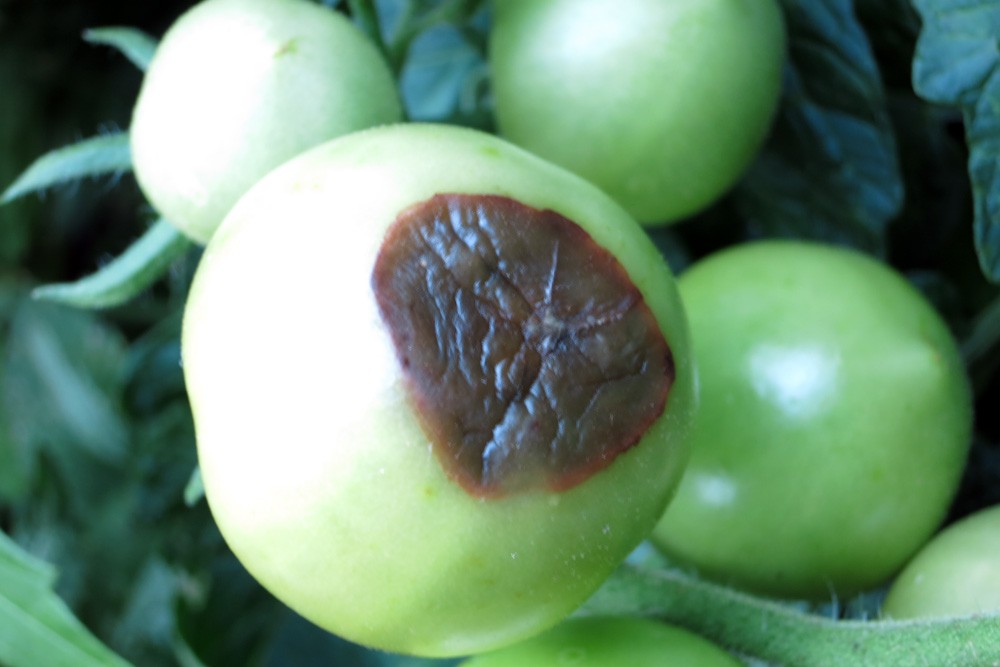Tomatoes with advancing maturity take their typical coloration of the variety, which ranges from yellow to red. However, it is not uncommon for tomatoes to suddenly turn brown or black. Learn here why these unsightly discolorations occur and how best to proceed in such cases!
If the tomatoes suddenly turn brown or even black, this is no reason to panic! Because often these are symptoms of a nutrient deficiency, which can be remedied with simple steps. However, if the discolorations are accompanied by other characteristics, such as mold, they should definitely be examined more closely. This is because these are often malignant fungal infections that can spread and lead to the death of the entire crop.
Contents
Blossom end rot
Blossom end rot is not a disease, but a nutrient deficiency. When tomato plants are deficient in potassium, it can be seen in both the leaves and the fruit. The foliage usually remains smaller, deformed and also shows spots. Watery spots form at the blossom attachment points and the fruits turn brown to black. The affected tomatoes are no longer edible and should therefore be discarded. Since these are symptoms of nutrient deficiency, blossom end rot can usually be treated successfully:
- pay attention to balanced fertilization
- too much nitrogen inhibits nutrient uptake
- too much magnesium neutralizes potassium uptake
- improve soil if necessary
- for example with carbonic acid lime
- Ensure regular water supply
Note: Blossom end rot usually only affects individual tomato plants, so spreading can be ruled out.
Blossom end rot

Blight is rightly feared fungal disease, because it spreads relatively quickly and can destroy entire stands of tomatoes. A disease is first noticeable on the leaves: The foliage is covered with a white mold coating and dark spots form on the underside of the leaves. The fungus spreads further and further and also attacks the fruits, which first develop grayish-green spots and eventually turn brown. Late blight cannot usually be controlled, but preventive measures can be taken:
- Always water from the bottom
- plants must always dry out well
- maintain sufficient planting distance
- regularly remove the lower leaves
- do not plant next to potatoes
Tip: To protect outdoor tomatoes from too much moisture, it is worth installing a tomato roof. This ensures that the tomatoes do not get too wet during rainy periods.
Tomato wilt
Tomato wilt can usually be recognized in the early stages by the unilateral curling of individual leaflets. The affected leaves also begin to wilt. Subsequently, tomato wilt spreads further to the fruit, on which many small brown spots form. The spots are usually white, have a brown yard and a light yellow border. However, the flowers may also show symptoms of the disease, as they take on a noticeable light yellow coloration. Diseased tomato plants should be immediately removed from the crop, because, unfortunately, control is not possible. Prevent tomato wilt by following these simple steps:
- Grow resistant varieties
- for example Kalimba F1
- always water from below
- Apply plant strengthening agents
- Dig the bed deeply at the end of the year
Tip: In addition, it is worthwhile to always keep an eye on the soil condition and improve the soil if necessary. To prevent tomato wilt, improve cold, heavy soil with sand or compost.
Fruit and stem rot

Fruit and stem rot is a fungal infection that is favored by warm, humid weather. The fungus is transmitted by both rain and wind and can literally wipe out entire stands of tomatoes. The fungal infection can first be recognized by yellowed leaves. In addition, black spots form on the fruit, which are slightly sunken. Another typical sign of fruit and stem rot is that the bark tissue of the stems turns black. The fungal infection cannot be controlled, so affected plants should be removed immediately. However, fruit and stem rot can be prevented as follows:
- Always clean working materials thoroughly
- avoid injury to the tomato plants
- use soft fixing material
- always water from the bottom
Gray mold
A typical characteristic of gray mold is that the plant is covered with a gray, velvety coating. However, gray mold can be detected even before the formation of the mold coating. This is because initially many round spots form, which are called “ghost spots”. The spots have a dot-like, dark center and are first outlined in green and then in yellow. Tomatoes also have other characteristics that are directly related to humidity: If it is particularly humid, the fruits bulge. If, on the other hand, it is conspicuously dry, scab-like necroses form on the tomatoes. Subsequently, the gray mold leads to wilting and rotting of the affected plant parts, so that the plant eventually dies. If the gray mold has not yet spread to the entire tomato plant, it is worth trying to control it:
- dispose of affected parts of the plant
- cut back to the healthy tissue
- spray fungicide
- take preventive measures
- always water from below
- ventilate sufficiently in the greenhouse
- keep planting distance
Brown/black tomato varieties

Not always a disease is the cause of a brownish or black color of the fruit. Because now there are a lot of varieties of tomatoes, which form particularly dark fruits. The tomatoes of these plants can be colored from purple to brown or black. Below is an overview of the most popular tomato varieties with exceptionally dark fruits:
- Indigo Rose: purple to black
- Black Ethiopian: brown, black, wine red
- Black Seaman: black-red
- Pineapple Noire: black-brown
- Robson Angolan: red-brown
- Black Striped Cherry: almost black
- Black Krim: red-black
- Black de Bravo: olive-brown
- Orange purple stripe: yellow to black-purple


